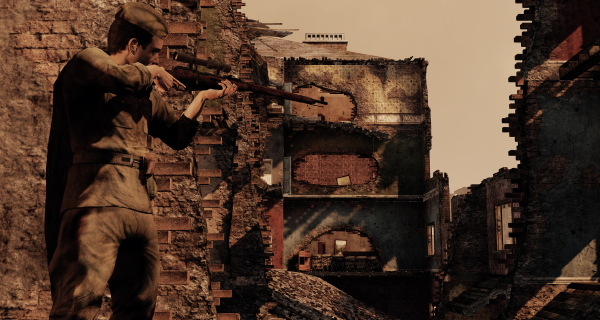
Red Orchestra 2: Heroes of Stalingrad is a bit of a misnomer. So swiftly does death come to those who venture boldly forth that only the most ruthless and calculated tactics offer a chance of survival. By necessity, field command and squad-based infantry warfare are the keys to overcoming the unique challenges posed by Red Orchestra 2, placing the player in a world where death is often instantaneous, brutal, and—if you’ve been outmaneuvered—unexpected.
Thanks to the game’s realistic damage mechanics, if you find yourself in a hail of machine gun fire, you’ll be dead long before you can accomplish anything that would feel at home in a Hollywood action movie. The real satisfaction in playing the game comes from wielding tactical command and team-based play to overcome an otherwise impossible situation. As a squad leader in the game’s single-player modes, you must learn to make strategic observations from the first-person perspective—no small task while staying alive and doing your own part in the firefight—and designate the positions and objectives of your teams in order to break enemy resistance. In the multiplayer modes, teamwork is emphasized by the need for players to have different weapons in order to survive the constantly changing tactical situation.
Red Orchestra 2 is crisply rendered (using the Unreal III graphics engine), though it is not beautiful. The locations in which the game takes places are immense and often somewhat Spartan, partially to make a strategic necessity of realistically-ranged firearms, and partially to echo the eerie hollowness of Soviet architecture in wartime. Though there are plenty of interior spaces, the trade-off for this sense of vastness is a lack of up-close personality, and at times this even translates to the combat, as well, which seems better suited to distances.
Red Orchestra 2 is challenging and its unique style of play lends itself well to both single and multiplayer experiences on a level-by-level basis, though it lacks narrative and gritty detail and hardly attempts to tell any kind of memorable story. If you want a truly immersive historical experience with a rich story, look elsewhere. If you areafter a sturdy, historically themed battle simulator with a rewardingly complex tactical interface, then this is your game.




